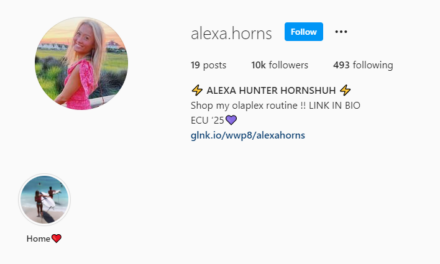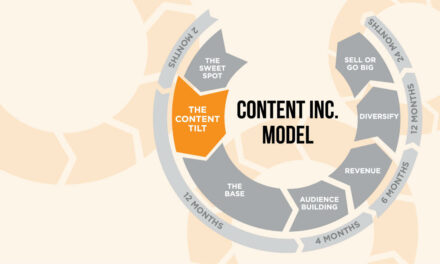According to Google Trends, “Election Results”, “Coronavirus”, and “Kobe Bryant” were the world’s most-searched terms in 2020.
Google Trends, which provides up-to-the-minute data on popular search terms. Given the trillions of searches performed through Google every year, Google Trends provides unique insight into what is on people’s minds. No wonder many brands have started using it for their content marketing.
Used correctly, Google Trends can help you generate content ideas, strengthen your keyword research, and much more. However, it is important to note the tool has its limitations. Here’s everything you need to know about Google Trends, as well as the dos and don’ts of using it in your content marketing.
Understanding Google Trends
Google Trends provides tons of data in the clean, straightforward style characteristic of Google. Plus, it’s fun. It’s fun to scroll through the homepage and see which people, movies, memes people are searching for.
Wondering what beer Americans most searched for in 2016? Budweiser America. Athlete? Michael Phelps. GIF? Puppy Monkey Baby.
Beyond specific search terms, Google Trends also lets you explore broader topics, whether that’s winter holidays or categories like arts and entertainment, or hobbies and leisure. No matter your industry, Google Trends can provide valuable insight for your brand. That’s what makes it such a powerful tool for content marketing.
Use Google Trends in These Ways
Scrolling through Google Trends will likely spark some ideas on how your brand can use it for content marketing. Here are some of our favorite applications.
Keyword Research
As we’ve said before, keyword research is a process you don’t want to skip. Google Trends can augment the keyword research you conduct in Google AdWords and Google Analytics. It can confirm whether your keyword choices are good ones and identify new or related keywords you may not have previously considered.
Even scrolling through the trends in your industry can provide useful keywords. Browse through the trends related to your industry, whether that’s business, tech, or health, to find keywords. You may even find it helpful to browse through the keywords of a different but related industry. If you work in healthcare and know that many of your customers are avid sports fans, take a look at the sports trends. You may discover a way to link your brand’s work in health to the sports world, reaching a broader audience and piquing your customers’ interest in a different way.
Idea Generation
Google has made it easy to go down a rabbit hole with Google Trends, and there’s no telling what ideas you’ll come up with should you follow it down.
Go to Hot Trends for the most up-to-date information about what people are searching for right now. You may find some inspiration there. Or hone in on a specific area where your customers are—California, for example, or even a particular city such as San Diego—to explore what people in that area are interested in.
To more directly generate content ideas related to your brand, enter a search term related to your business and check out the related topics and queries.
If you spend even half an hour going through Google Trends looking for content ideas for your brand, we know you’ll find some.
Content Calendars
So you want to publish a blog post about fitness apps. Guess what? Google Trends data over five years shows that interest in fitness apps spikes in early January, so that’s the time to schedule that post in your content calendar.
Using Google Trends can show you when to schedule and publish content for maximum impact. It’s a very helpful feature for your content marketing. You spend a lot of time crafting your content; don’t waste that effort by publishing it at a time when fewer people will read it. Run your keywords through Google Trends to develop a content calendar.
Don’t Use Google Trends This Way
We’ve shown what Google Trends can tell you, but it’s equally as important to keep in mind what it can’t.
Use Without Context
Remember: Google Trends doesn’t give enough context around why people are searching for certain terms. It’s not enough to know people are searching for the term “Budweiser”—if the reason people are searching for that term isn’t flattering, your brand probably doesn’t want to be associated with it.
It’s also important to keep in mind that search terms may not wholly reflect what information people are looking for. For example, in 2016, “What is the internet” was the definition most commonly searched for in Belfast, Northern Ireland.
Do people in Belfast not know what the Internet is? Well… yes and no. We can assume that since they were using the internet to find information about the internet, it’s a better guess they were looking for information on the technical side of how the internet works rather than an overview of how to use the internet itself.
A blog post describing that the internet is used to check email and search for information may not be of interest to those people in Belfast. A post explaining how computers act as routers and transmit data via cables, wireless radio connections, and satellites may be more what they’re looking for.
Lastly, keep in mind that Google Trends provides relative information. A number plucked out of context doesn’t mean that much. One example is the much-reported spike in searches for “What is the EU?” hours after the Brexit vote. Yes, there were more searches for the term — but at its peak, there were only 1,000 more searches than usual. More searches don’t necessarily mean many.
Google Trends doesn’t provide context for its numbers, as this data analyst describes. It’s important to make sure you understand the missing context when using Trends for your content marketing.
Even so, Google Trends is an interesting look into the hivemind of people and what captures their interest. Use it wisely, and you will see how it can do wonders for your content marketing.






